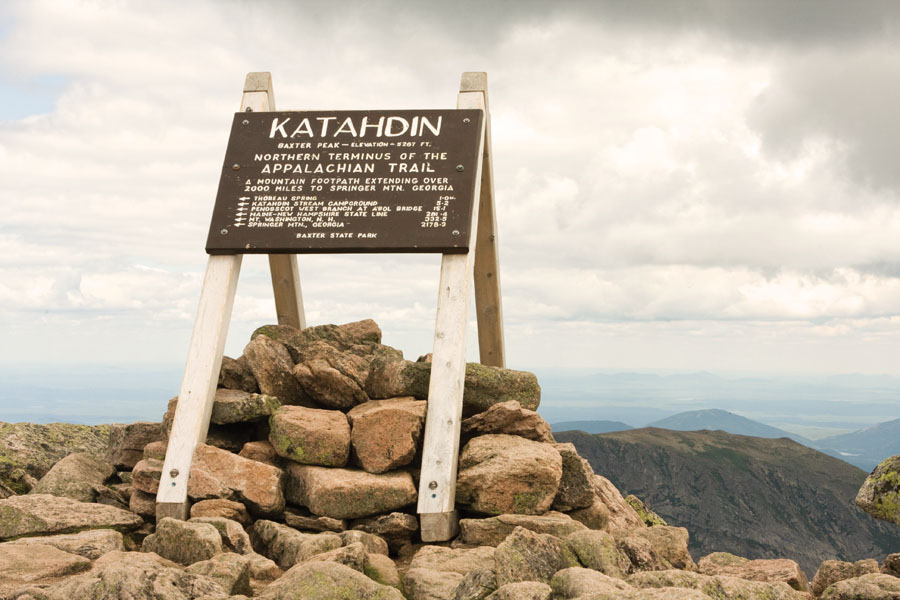The Department of the Interior is considering removing protections for 27 national monuments covering 11 million acres of land and 760 million acres of ocean. Bears Ears National Monument in Utah has been the headline-grabbing national monument at the center of the debate, and last month, Interior Secretary Zinke recommended substantially shrinking Bears Ears.
Another one of the monuments under threat—and the only one in the East that’s currently on the list—is Katahdin Woods and Waters, an 87,600-acre swath of forest in Maine’s North Woods at the terminus of the Appalachian Trail. The monument protects 30 miles of pristine rivers and streams, important wildlife habitat, spruce-fir forests, and unbroken shorelines. Katahdin Woods and Waters National Monument also protects territory used by Penobscot and Wabanaki Native American tribes.
Yet some groups want national monument protections removed from this landscape. Ann Mitchell, president of the Maine Woods Coalition, a logging industry organization, argues that the federal government is using private rights-of-way (which she admits came with the land that comprises the monument) to allow access to the monument, even though the roads were “intended” for logging. She also says there’s “nothing distinctive” about the KWW, that unnamed people she knows were “barred” from public hearings and otherwise not allowed to express their opposition to it, and that the monument is costing the timber industry money. “Maine has had open access to the timberlands for hundreds of years. It’s a unique situation up here,” she says “We don’t need the federal government taking over.”
Maine Governor Paul LePage is also vociferously opposed to the Katahdin monument, fearing it could lead to the creation of a national park and limit extractive uses of the land. “There is no need for this intrusive land grab from the federal government,” he said. “Make no mistake, the creation of another national park will diminish the ability of Mainers to use the land and Great Ponds in Northern Maine for the traditional activities they have enjoyed for nearly 200 years.”
Opponents have also griped about a lack of public participation in national monument designation, but the truth appears to be just the opposite. There actually was a robust public vetting process that lasted for more than five years. This included the largest public meeting on a conservation issue ever held in Maine, convened in May 2016 and hosted by Sen. Angus King (I-ME) and then-Director of the National Park Service Director Jonathan Jarvis. Nearly 1400 people attended.
“The suggestion that there wasn’t enough local input is ludicrous,” says Cathy Johnson of the Natural Resources Council of Maine. “There was nothing short of tireless public input and engagement in this process.” More than 72 percent of Maine residents say they support the monument.
As for the purported danger to the state’s logging industry, this too seems like mostly hand-waving. “The land that makes up the monument was sold to us by logging companies,” says Lucas St. Claire of the Elliotsville Plantation, the Portland-based nonprofit foundation that transferred the land to the Department of the Interior. “If they needed it so badly, why would they sell it? It was very clear what our objectives were prior to the sale.” And if the logging trucks are slightly inconvenienced by tourists, St. Claire pointed out that those people bring money, and lots of it; pulp and paper currently contribute 4.1 percent to Maine’s gross state product, while tourism contributes nearly 21 percent. “There is not one shred of evidence that even a single timber-related job has been lost as a result of the establishment of the monument,” Johnson says.
On the other hand, myriad recreation-oriented businesses in the area stand to lose a lot. Take, for example, Three Rivers, which offers whitewater rafting, canoeing, kayaking, skydiving and other outdoor activities at four different locations in the area of the KWW. “Business has already begun to improve since the monument was created, and real-estate values are increasing,” says owner Joseph Cristopher. “The paper industry has left this area, and this is our best opportunity for a turn-around. It also represents a massive ecological improvement going from timber harvest to conservation.”
The ill effects of revoking the monument could even extend tangentially beyond America’s borders. That’s because access to Maine’s part of the International Appalachian Trail, which runs from Mount Katahdin in Maine all the way to the northern-easternmost point of the Appalachian Mountains in Canada, would be imperiled. “The land would still be federally owned, but we’d have to start all over at square one” to route the IAT, says Don Hudson, a founding member of ITA and president of the IAT Maine Chapter.
Although no president has reversed a national monument designation, President Trump has broken the mold before. So anything’s possible, and much is at stake. Meanwhile, Johnson and others would like to see the monument become a national park with even higher levels of environmental protection and greater recreational opportunities to benefit local economies.
That binary choice—whether to use federal land for lesser short-term economic gain from resource extraction, or preserve it for its natural beauty and greater long-term economic potential from recreation and tourism—is, of course, at the heart of many land-management decisions in the United States. St. Claire believes the pro-logging and drilling folks in his state simply don’t appreciate what nature has provided, and thus are all too eager to sell it off to the highest bidder. In other words, literally and figuratively, they can’t see the forest for the trees.








